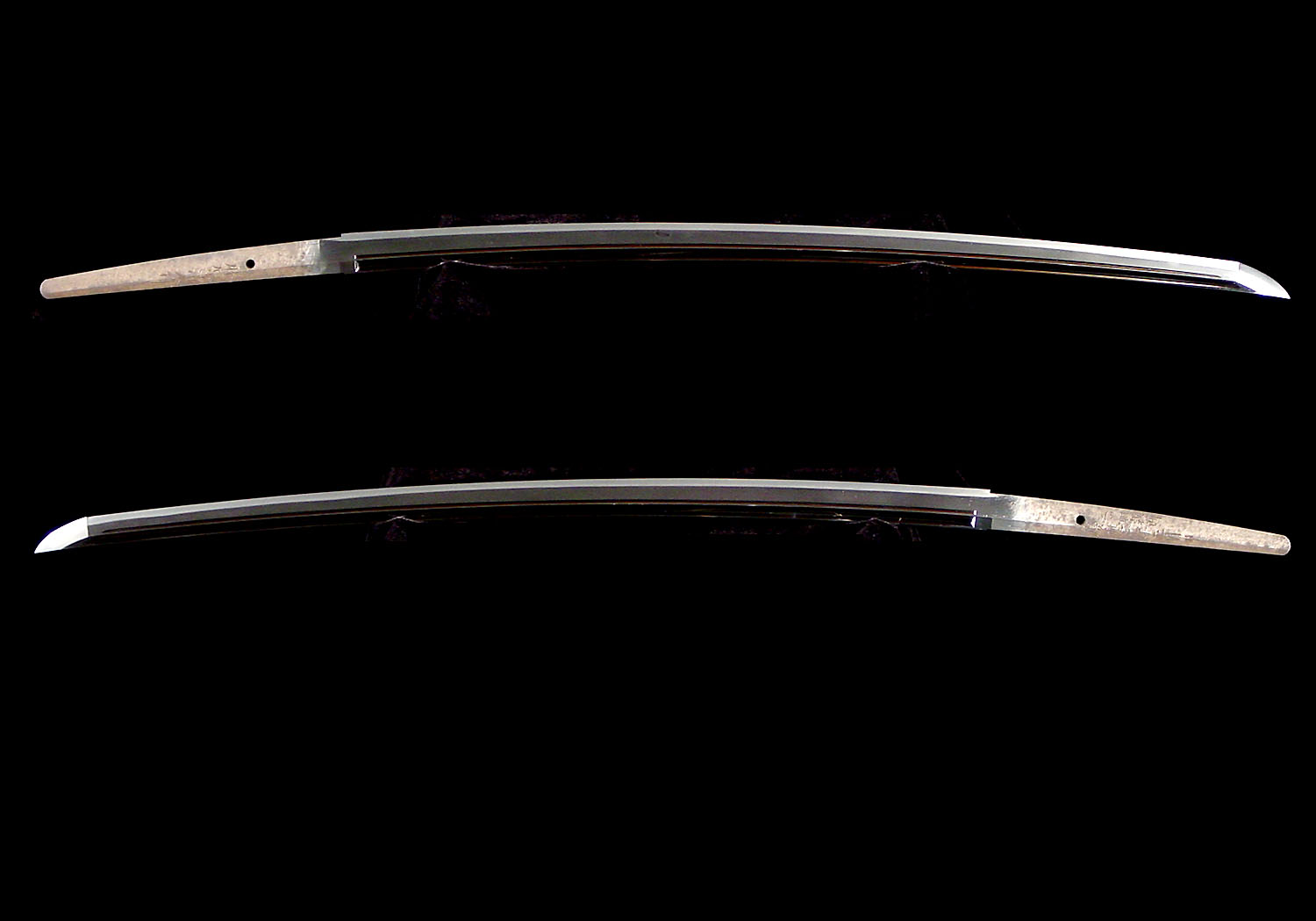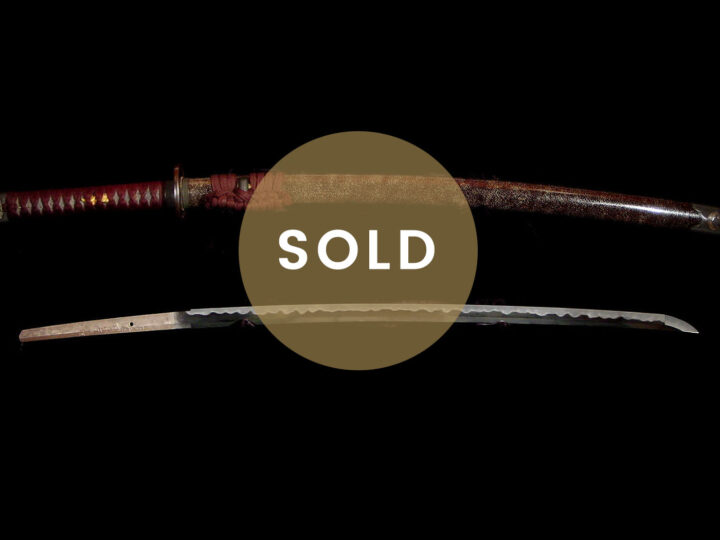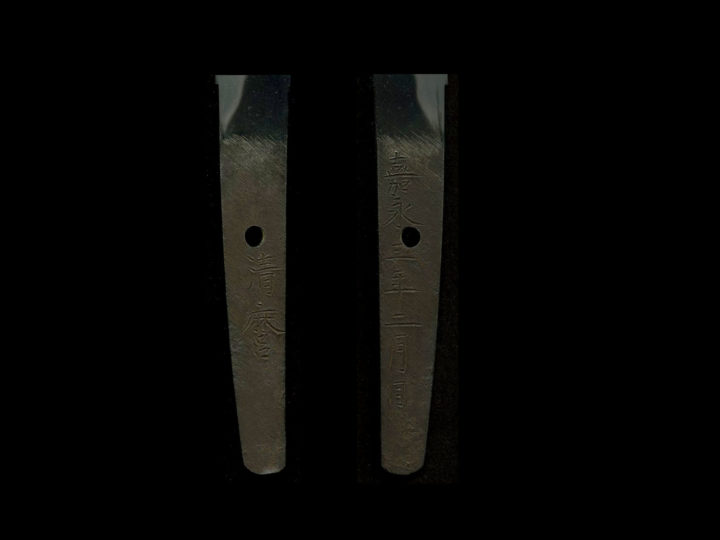
Kiyondo’s (清人) family name was Saitô (斎藤)and he was the adopted son of yakaji Saitô Koichirô and was first called Kojûrô. Through the introduction of Saitô Masamoro, in 1852 he entered the mon of Kiyomaro (清麿). His apprenticeship with Kiyomaro (清麿) ended in 1854 when Kiyomaro (清麿) committed suicide. Even though his apprenticeship was very short, he mastered his teacher’s techniques and style. In 1854, he established a forge in the Kanda section of Edo. In Keiô sannen (1867) he went up to Rakuyô in Kyôto and received the title of Buzen no Kami. He returned to Dewa Shônai and worked as a swordsmith for the Han. He passed away on October 3rd in the thirty-fourth year of Meiji (1901) at the age of seventy-five. To give the reader a little background of this smith, it might be a good idea to first give some background on his very famous and tragic teacher, Kiyomaro (清麿).
Kiyomaro (清麿) was born in the tenth year of Bunka (1813) in Akaiwa village, part of Komoro in Shinano Province. He was the second son of a county Samurai named Yamaura Nobukaze. His given name was Yamaura Tamaki in his childhood and later it became Yamaura Kuranosuke. After studying with his older brother, Saneo (真雄) (also called Masao), they both were apprenticed to Kawamura Toshitake (河村寿隆), a sword smith of Ueda near Komoro, and at this time, he called himself Masayuki (正行). In 1834, at the age of twenty-two, he decided to forsake sword making and go to Edo to take advantage of the current interest in military philosophy and improve his understanding of bushidô. He studied under the famous and talented hatamoto and military theorist, Kubota Sugane. Sugane recognized Kiyomaro’s (清麿) talents and convinced him to return to sword making. In an effort to help Kiyomaro (清麿), in 1839 he organized a bukikô for Kiyomaro’s benefit. This was a kind of lottery the purpose of which was to secure orders for swords for Kiyomaro (清麿). This venture failed but Kubota was able to secure Kiyomaro (清麿) a position making swords in the bakufu’s armory. Kiyomaro (清麿) is said to have repaid his benefactor by embezzling funds from the armory in order to flee to Nagato (Choshu) which, at that time, was a political hotbed for the movement to end the Shogunate and restore the Emperor to his throne.
Later, however, he returned to Edo and with the help of Sugane he established a smithy in Igachô, Yotsuya in Edo. In 1846 he changed his name to Kiyomaro (清麿) and made a blade for his patron, Sugane. This sword turned out to be what is today considered to be his supreme masterpiece work. On the strength of the qualities of this sword and the other swords he produced around this time, he came to be called the “Masamune of Yotsuya”. Throughout his life he had an addiction to drink and was often drunk. He ended his curious and brief yet spectacular career in 1854 when he committed suicide at the age of forty-two.
When his teacher, Kiyomaro(清麿), committed suicide, he left debts and an unfulfilled outstanding order for thirty swords for which he had accepted partial payments. Kiyondo (清人) made it his responsibility to complete these swords to preserve his master’s honor. He did so and inscribed these swords, SHI NI KAWATTE TSUKURU TÔ (師に代わって造刀). This means, “MADE THIS SWORD IN PLACE OF THE TEACHER”. He used the proceeds from the sale of these thirty swords to clear the debts of his master, Kiyomaro (清麿).
SUGATA: Kiyondo’s blades are long with a shallow sori, relatively wide mihaba, and a stretched kissaki. Like his teacher, Kiyomaro, his blades have an overall feeling of sharpness. His tanto also lack a full fukura and are forged in a variety of shapes. Kanmuri-otoshi tantô can be seen at times.
JITETSU: His jigane tends to be a very dense and tight ko-itame that is ji-nie lined. Occasionally an example with masame or ko-mokume can be found mixed in with the ko-itame. The jihada will contain chikei-gokoro and ko-nie. The jigane is weaker than that of Kiyomaro. Masame-hada of the Yamato tradition can be found in his later works, especially in the shinogi-ji.
HAMON: His gunome-midare will have round heads and contain ashi and yô as well as ara-nie here and there. His ashi will not have uniform lengths like his master’s, and, in some instances, can extend sideways. There will be many long sunagashi and kinsuji in addition to the yubashiri looking like tobiyaki in places. He also made splendid medium-wide suguha showing some natural notare-gokoro. It is mostly sprinkled with ko-nie and will contain a great many feint ko-ashi.
BÔSHI: Generally, his bôshi will be extended. He will have a ko-maru bôshi with a deep kaeri. It will exhibit hakikake and kinsuji. Look for the hakikake to resemble the traces of comb swept sand as this is one of his kantei points.
NAKAGO: The nakago will be big and wide on katana. It will be most often carefully finished with sujikai yasuri and end in a ha-agari-kurijiri shape with slightly rounded sides on both the mune and ha sides. The mei will be chiseled thickly, powerfully, and skillfully.
MEI: He had a great variety of signatures. Many swords will have dates. Here are some of the most common examples:
KIYONDO 清人
USHÛ SHÔNAI JU KIYONDO 羽州庄内住清人
FUJIWARA KIYONDO 藤原清人
BUZEN NO KAMI KIYONDO 豊前守清人
SAITÔ ICHIRÔ FUJIWARA KIYONDO SAKU 斎藤一郎藤原清人作
USHÛ SHÔNAI JÛ FUJIWARA KIYONDO OITE EDO SAKU 羽州庄内住藤原清人於江戸作






